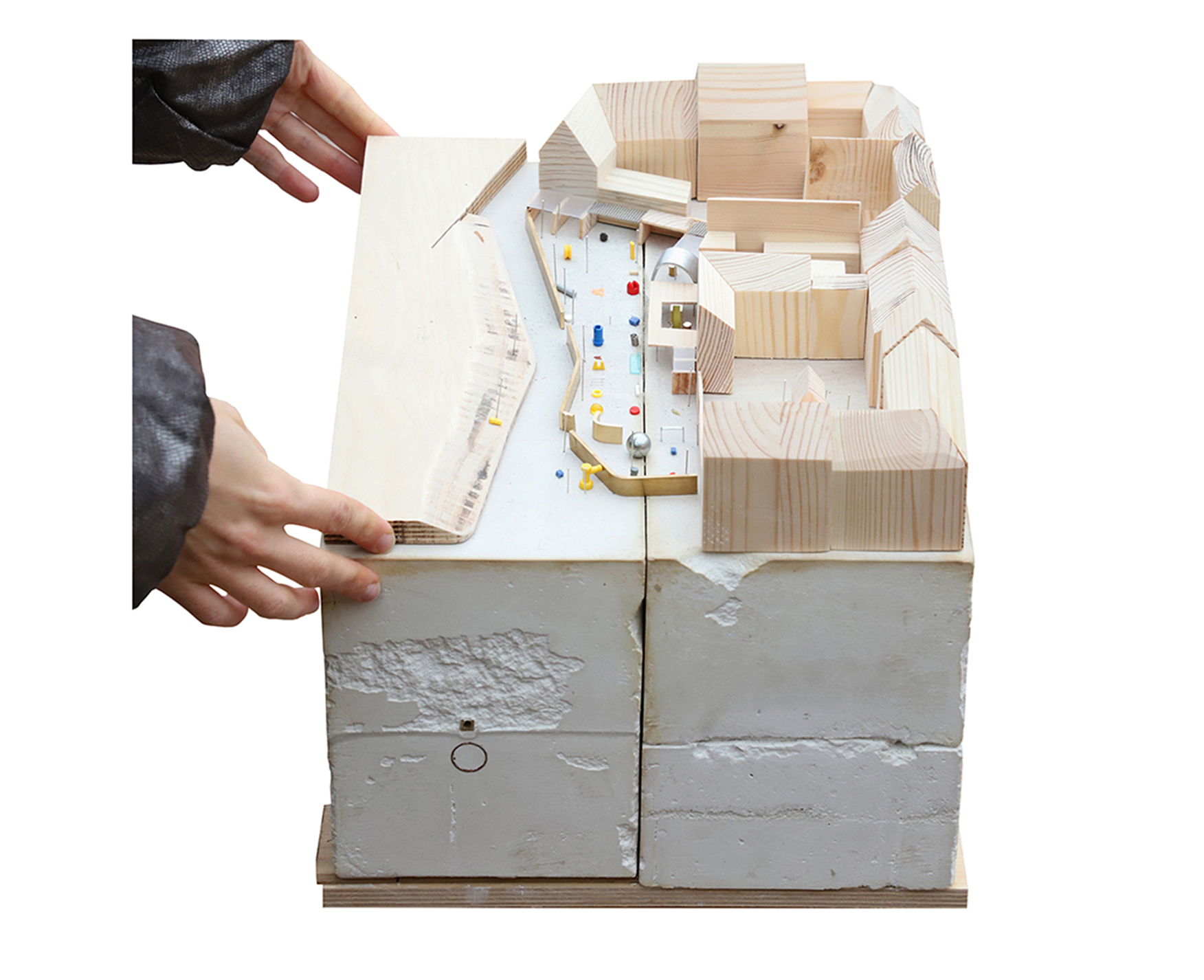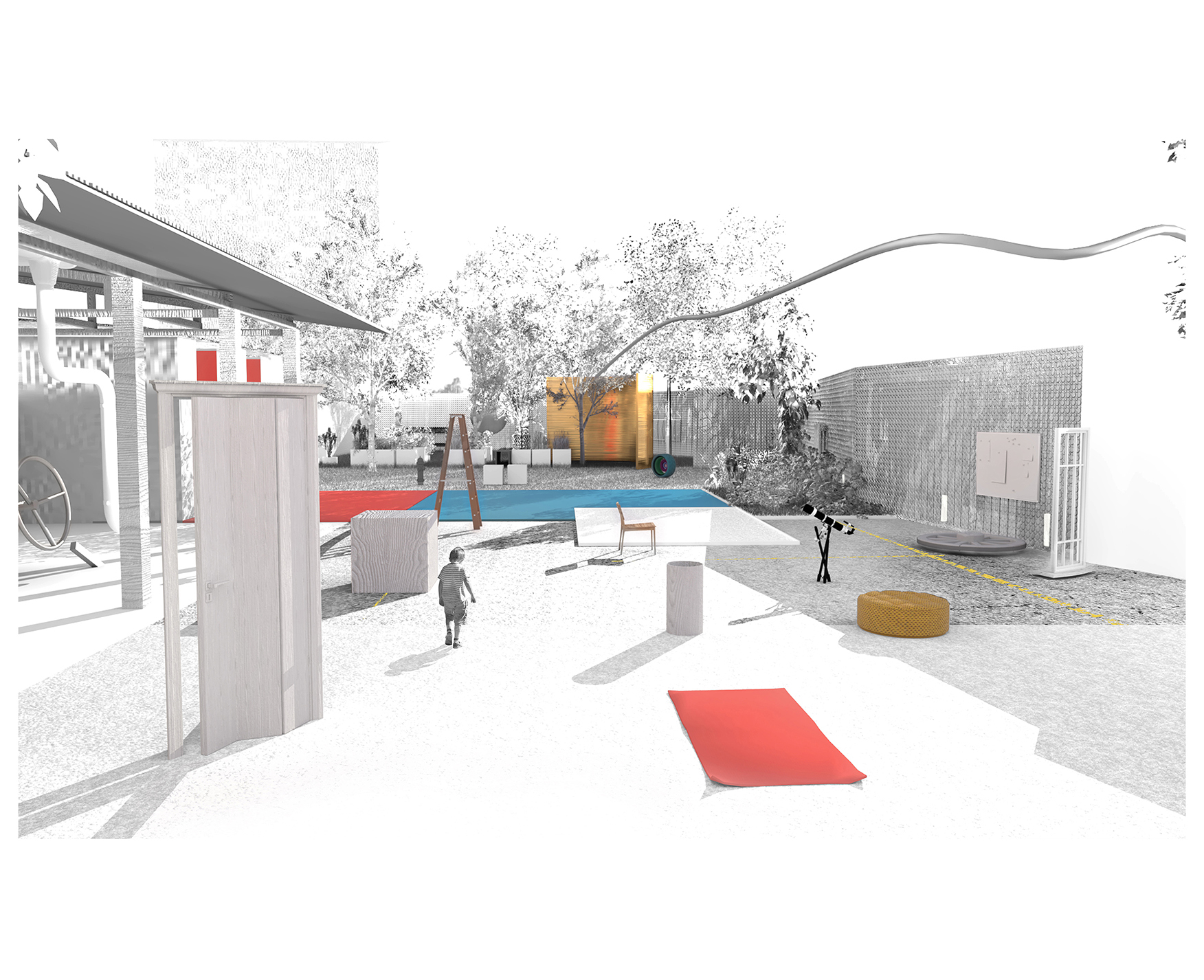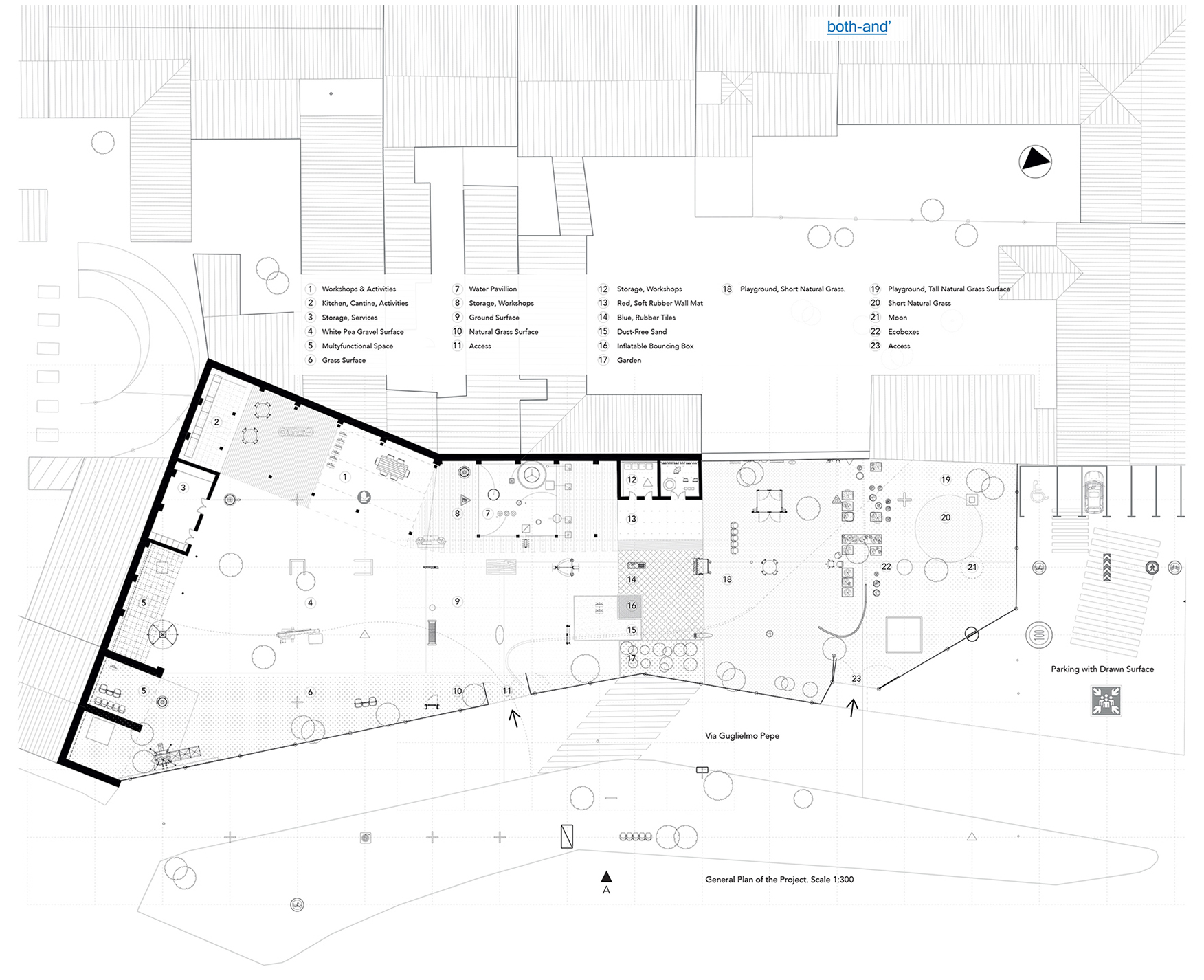ADRIAN LABAUT
WALLS, IMAGINATION AND RESISTANCE
Adrian Labaut is a Cuban Architect who is currently living in Europe. His ideas on Architecture are extremely inspiring and he has a very successful way of representing them. Through the creation of physical models, sketches and digital collages, which are deeply engaging, he has been able to develop a unique style.
For this interview, Adrian talks about his work, process and inspirations, including a project he developed with Anna Labaut K, which was selected as a finalist for the "Sprouting Minds" competition.
In a few words, tell us about yourself and your work.
I am a Cuban Architect, living in Europe for a long time already, where I have had the chance to enrich my ideas about Architecture and Art enormously. I obtained my Bachelor and Masters Degree in Milan, Italy, where I collaborated with people who became very important for me. I worked as well for a while in Seville and currently, I am a Doctoral Researcher in Architecture and Urbanism in Madrid, Spain.
What does Architecture mean to you and how do you translate that across your projects?
I must say that I enjoy immensely “being” an Architect, you must say that Architecture is a way of life. At the same time, the idea that “Architecture is not enough” has been rounding in my work lately. I think so because of the extreme production of Architecture in the age of networks, which somehow has transformed it into such an homogeneous matter that it is almost impossible to differentiate anything.I love music, movies, other types of art, philosophy, science, football, and for me it has become impossible to differentiate these other “professions” from Architecture itself. If you check my last project, which was selected finalist for the Sproutingminds competition in Milan, the final project is simply the consequence of analysis, theory, readings, and exploring the possibilities of putting all these ideas together into an understandable “Architectural” Idea. Architecture is the result of the collision of non-Architectural thoughts, and I find working in this way very enjoyable.
In your projects, where does Architecture end and ‘idea’ or ‘imagination’ begin? How does your visualization style support that?
I think that those things are never apart, Architecture and Imagination grow together. There is Imagination in every part of the architectural process, from the initial thinking, to drawing a plan. I believe that there is always the intention from the Architect/Artist to do something innovative; we would be lying to ourselves if we think the opposite. There is innovation in applying the knowledge we have, in putting certain ideas together, in finding ways to express ideas, in selecting materials and in explaining why what we do is important.
It is all about imagination. ”Imagination rules the world” as Napoleon said. My “style” is about finding what suits better to each idea. I have a certain tendency, as some people have told me (and not always positive), to do everything “beautiful” - whatever that means. I try to always find new ways for representing what I do and that is simply because otherwise, I would get bored very easily.
Your drawings seem to have a very selective use of color, mostly to highlight some features or certain spaces. What do you think is the meaning of color in an architectural drawing?
Each image/object/idea is represented by a specific mood, which is clear from the beginning of the process. The use of colours in my drawings is part of the intention to give more expressiveness to each drawing. I like to work in each image individually, like a little work of art. Equally, I do not think that colour is that important in Architectural drawing, I have seen many amazing drawings in black and white.
Maybe the desaturated images help you to see a bit more in depth what the idea is, and maybe the excessive use of colour is a consequence of a weak idea. I am speaking for myself, I don't know, but as long as the idea to be represented is good, I really think that the use (or not) of colour is irrelevant. I like to see drawings which have, I could say a “deep” meaning, that is, for the longer you watch the image the longer you discover. I don't like when you get bored of the image/project/idea just a minute after looking at it.
“Architecture and Imagination grow together”
How important is the element of narrative to your work? Why do you choose to represent your projects as a ‘collage’ or a ‘diagram’, rather than a more realistic image?
If by narrative you mean the working process, or the connection of ideas, it is of course very important. The narrative thou is never lineal. I may move forward or backwards inside the same project without loosing the main idea, because the process is about connecting the points in different ways. It may happen that, in some moment, you realise that you have been working with some wrong points, or you need to add/erase some, so you move backwards and rectify, so then this change will affect the rest, and so on. If you see the process as 3D, then you'll probably see how all that connects.
In my images, I use a lot of collages because of their simplicity and speed. If there is an idea to be represented and it does not merit a long time and effort, I will probably make a collage of it, simply because it is fast and easy. When there is something deeper, I like to think about different ways in which it could be done. It can be very fun and in those cases, I don't mind spending a week making a model just for taking a picture of it later if that will represent what I want. I don't like realistic images. For me, it is sort of like realistic painting. I prefer to have some space for imagining what the project really is, rather than getting a “this is what it is” right from the beginning.
What are the biggest challenges to creating your images and how do you deal with them?
There are really not many challenges, as I do work for myself. I am kind of always satisfied with it because I understand what I like and how it will look. The real challenge is when somebody asks me to do something for them. That may be harder because normally the person knows exactly what is the result he/she is expecting. In those cases, I make it clear from the beginning that I do not know about how the thing will look like, because I don't produce images in series. Everything is different and in any case, I do images because it is easy for me and as long as I enjoy it and it doesn't become oppressive, I'll probably keep doing it.
Who or what influences you graphically?
There are many things that interest me, mostly of the 40s, 50s, 60s. As the production of images was not as easy as we find today, we are able to find much more conscious drawing, which are meant to represent the whole ideal of the project. That is why they look very rich and complex conceptually, as in many cases they may be really simple graphically.
What’s your design process? What tools do you use to develop your designs?
I like to use physical models most of the times, mostly because I enjoy making them very much and the result is always richer that way. In some cases, I use a 3d software like Rhino or Blender, and then some Illustrator, Photoshop… It depends on the idea.
It all starts with some nice research, readings, talking, brainstorming and discussing. The rest depends. Maybe the next steps include already the use of autocad or 3d modelling softwares. I prefer to built a model big enough as to play with it, I just find it more productive in general. If the idea is clear, I know that the model will not be a waste of time.
Could you show us / talk about the process to create one of your images? What tools do you use? Do you experiment with different materials and methods?
It is interesting because a couple of months ago, I was showing a friend who needed help, how to work with some images. He was very surprised about the process I use, the simplicity and the speed. I do not follow a single process, it is different most of the times. Something I do very often is take a picture of a model or make a very simple rendering without materials. After, and very importantly, I manage the contrasts, illumination, exposure, the base is fundamental.
Right after this moment, the image is almost done. I use as few textures as possible and basically start drawing and erasing, putting shadows and light and that is basically all. The images may look very complex, but actually the process is extremely simple. And of course, I like to experiment in different ways: drawing or printing over different types of paper, projecting the image over a surface, photographing it and then working over it again, it can be anything.
What advice has influenced you as an architect?
Everything is Architecture. Alles ist Architektur. Hans Hollein.
What advice would you give to young designers?
I am not really sure because I am trying myself to make sense about what to do in this moment of over production and homogeneity inside the profession. I don't think that the advice “be yourself” is necessary to mention anymore. I think that everything is part of Architecture and Architecture is part of everything, so I would say that it is important to find ideas out of what we are used to do for enriching it.
It is not about design, about a beautiful image or a great speech. I believe it is more about how everything affects the rest, how life and knowledge enriches what we do and how what we do is - sincerely and not mediatically - contributing to life in cultural, educational, scientifical, political, ideological or social terms. We need to be honest with ourselves.
“Everything is part of Architecture and Architecture is part of everything”
Adrian Labaut explains a little bit about a project he developed with Anna Labaut K. Their project, titled “Both - And”, was a finalist for the "Sprouting Minds" Competition, which asked for the redesign of Isola Pepe Verde’s garden in Milan, Italy.
“The project is created as a superposition of two different realities: the “territory of the city” and the “landscape of imagination”. The former creates the base, presenting an infinite number of possibilities. It is an abstract outline of the space and it doesn’t have a specific content. Then, the second reality fills this void and gives the site an ever changing narrative. It is a materialisation of innovative ideas and the theories of philosophers and researchers of the 20th century who focussed on children’s education and their development. Flexibility and softness are the embodiment of life as quoted in the movie Stalker (Tarkovsky) and this idea is expressed in the site both in the material and in the fictional fields.”
Here a selection of images submitted to the competition, which show the different techniques Adrian and Anna used for developing the project. It includes hand drawings, diagrams, renders and physical models.





Adrian, thank you for taking the time to interview with Arch-Vizz and show us your amazing work.
You can find more about Adrian Labaut's work at his website alabauth.eu and his instagram @alabauth.
Interview & Images Courtesy: Adrian Labaut
Interviewer: Stefani Fachini








